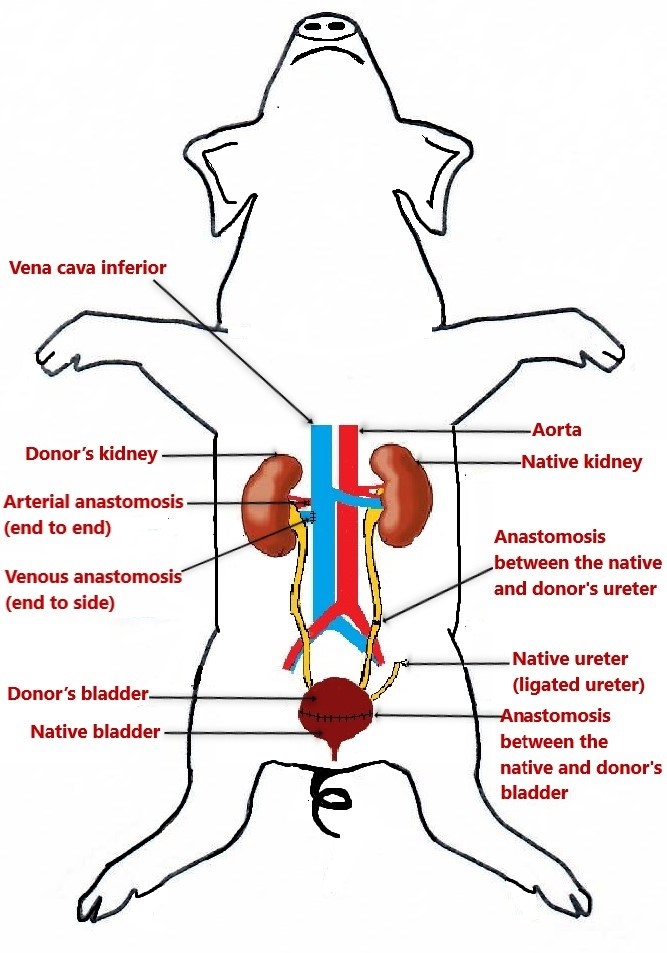Transplant Surgeon
General Surgery and Organ Transplantation
University Medical Center
Transplantation of a kidney with a part of the bladder as an en block: An experimental study
Gani Kuttymuratov1, Ardak Ainakulov1, Askar Ayaganov1, Ruslan Utebaliev1, Abdurakhman Tuleuzhan 2.
1General Surgery and Organ Transplantation, University Medical Center, Astana, Kazakhstan; 2Surgery, West Kazakhstan Medical University named after Marat Ospanov, Aktobe, Kazakhstan
Background: Donor kidney transplantation and bladder reconstruction are necessary for complex pathologies such as chronic renal failure, posterior urethral valves, neurogenic bladder, ectopic ureter or bladder exstrophy.
Aim: to evaluate the effectiveness of en-bloc transplantation of a donor kidney, ureters and part of the bladder to recipients with simulated small bladder in an experimental study.
Methods: Study Design: a 29-day, open, pilot prospective experimental study: 14 days constituted an adaptation period, 5 days for the interventions, and 10 days constituted an observation period.
The study totally included 24 White Landras sibling pigs, which were divided into 12 donors and 12 recipients. The pigs were 3-4 months old and weighing 35-45 kg of both sexes from the same sow to avoid transplant rejection. The pigs after 8-9 days of transplantation were euthanized, and macrovisual and histological investigations were performed. The Local Ethics Committee of West Kazakhstan Medical University approved the study.
Results: Eleven pigs survived the operation, but one pig died 10 hours after the operation. The cause of death was pulmonary embolism according to the pathological autopsy. In the eleven animals the kidney, ureters and part of the bladder transplanted as en block visually were filled with urine, full of blood, and tissue turgor was good. Visual inspection of the kidney and ureters was satisfactory, bright red. The implanted bladder had a red-burgundy color in all eleven cases. No anastomotic leakage was observed. A histological examination of the graft tissue on the 8-9 after-surgery days showed the preservation of blood flow in the tissues of the bladder and ureters. No total tissue necrosis was detected.
Conclusions: In our experimental model, transplantation of a donor kidney, ureters and part of the bladder to recipients with a simulated microcyst is effectively feasible; pigs are a suitable animal model for genitourinary organ transplantation.

This research has been funded by the Science Committee of the Ministry of Science and Higher Education of the Republic of Kazakhstan (Grant #АР19677564).
References:
[1] Kidney transplantation; Bladder transplantation; En bloc transplantation; Small bladder.
Lectures by Gani Kuttymuratov
| When | Session | Talk Title | Room |
|---|---|---|---|
|
Sat-20 17:40 - 18:40 |
Multi-Organ and Organ Donation Posters - from P2.57 to P2.62 | Transplantation of a kidney with a part of the bladder as an en block: an experimental study | MOA 10 (Exhibit Area) |
